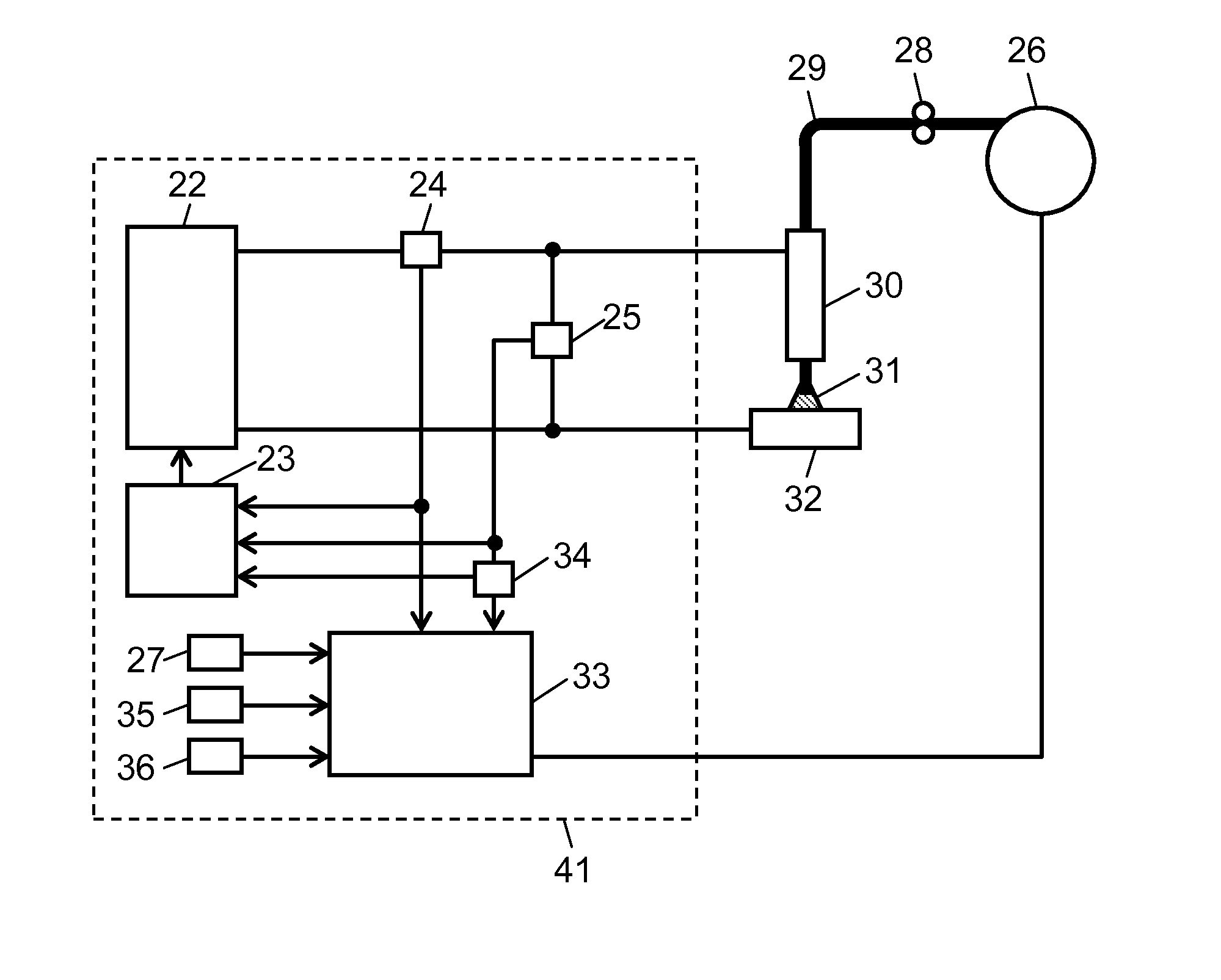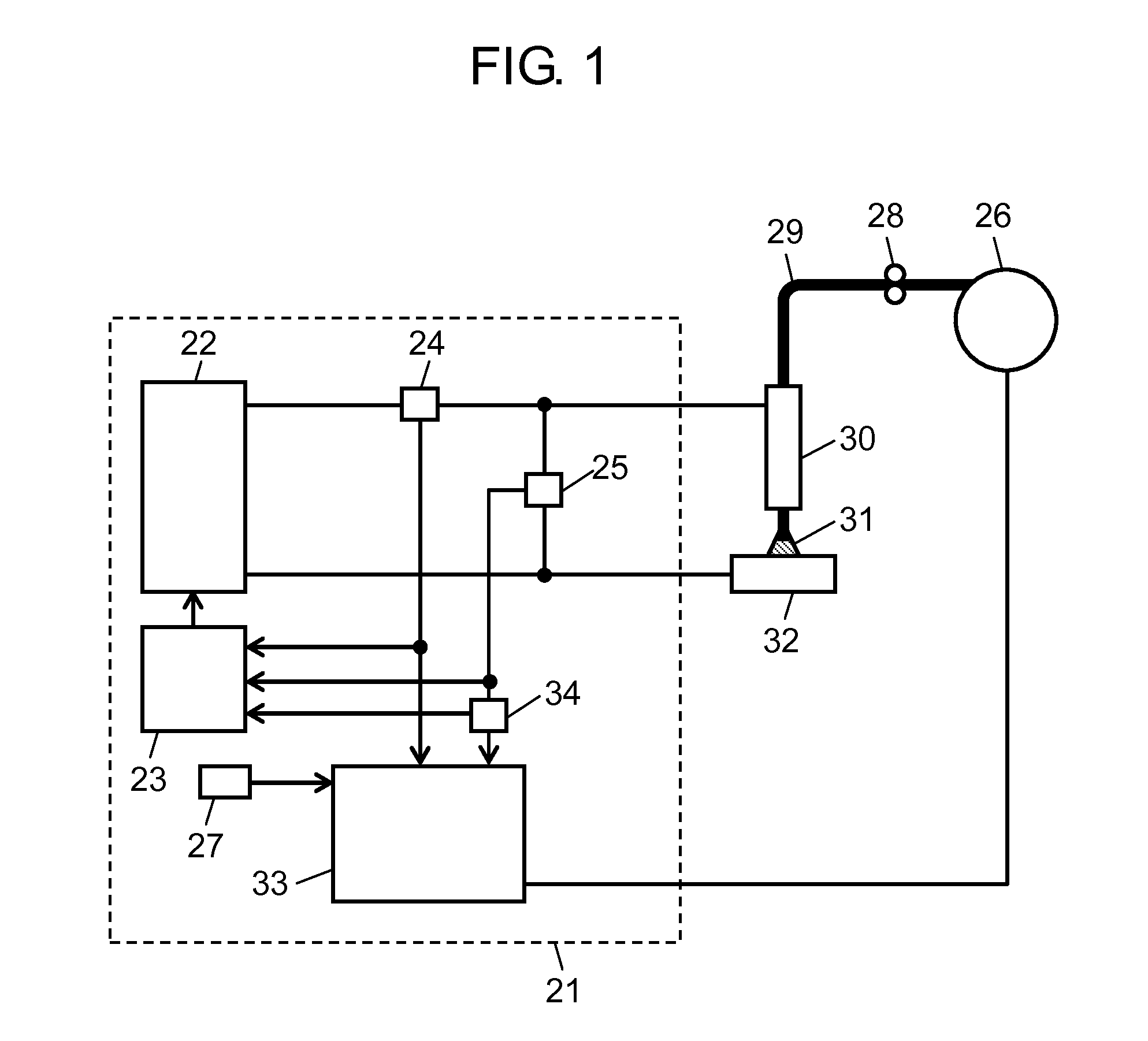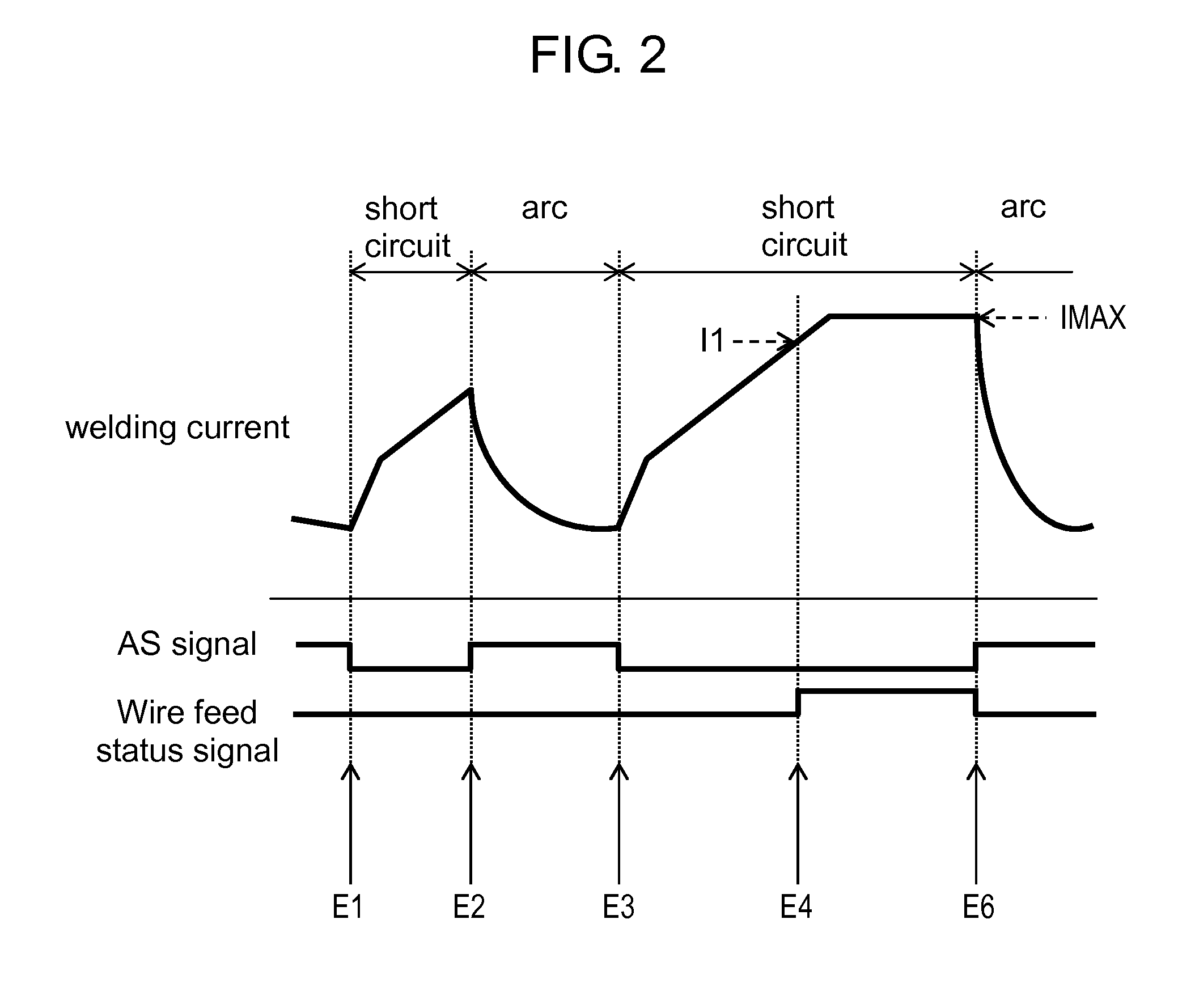Welding method and welding device
- Summary
- Abstract
- Description
- Claims
- Application Information
AI Technical Summary
Benefits of technology
Problems solved by technology
Method used
Image
Examples
first exemplary embodiment
[0037]FIG. 1 shows a schematic configuration of welding device 21 according to a first exemplary embodiment of the present invention. FIGS. 2 and 3 show temporal changes of a welding current, an AS signal which indicates an arc state and a short-circuit state, and a wire feed status signal in the welding device.
[0038]As an example of a welding device, a consumable electrode arc welding device is described as follows, which performs welding by alternately repeating short circuits and arcs. The operation of welding device 21 shown in FIG. 1 is described with reference to FIGS. 2 and 3.
[0039]In welding device 21 shown in FIG. 1, welding output unit 22 provides a welding output. Output controller 23 controls welding output unit 22. Current detector 24 detects a welding current. Voltage detector 25 detects a welding voltage. Feeding motor 26 feeds welding wire 29. Current setting unit 27 sets a threshold for the welding current. Feed roller 28 feeds, via welding torch 30, welding wire 29...
second exemplary embodiment
[0070]Welding device 41 and its operation according to a second exemplary embodiment of the present invention is described with reference to FIGS. 4 to 6. FIG. 4 is a schematic configuration of welding device 41. FIGS. 5 and 6 show temporal changes of a welding current, an AS signal which indicates an arc state and a short-circuit state, and a wire feed status signal in the welding device according to the second exemplary embodiment.
[0071]The main difference of welding device 41 of FIG. 4 from welding device 21 of FIG. 1 is to include elapsed-time setting unit 35 and time keeper 36, which will be described later.
[0072]As shown in FIG. 4, elapsed-time setting unit 35, which may be composed of a CPU, sets a first predetermined time T1 as an elapsed-time threshold since the welding current reached the first current value I1. Time keeper 36, which may also be composed of a CPU, counts the time since the welding current reached the first current value I1.
[0073]Wire feed controller 33 con...
PUM
| Property | Measurement | Unit |
|---|---|---|
| Time | aaaaa | aaaaa |
| Current | aaaaa | aaaaa |
Abstract
Description
Claims
Application Information
 Login to View More
Login to View More - R&D
- Intellectual Property
- Life Sciences
- Materials
- Tech Scout
- Unparalleled Data Quality
- Higher Quality Content
- 60% Fewer Hallucinations
Browse by: Latest US Patents, China's latest patents, Technical Efficacy Thesaurus, Application Domain, Technology Topic, Popular Technical Reports.
© 2025 PatSnap. All rights reserved.Legal|Privacy policy|Modern Slavery Act Transparency Statement|Sitemap|About US| Contact US: help@patsnap.com



